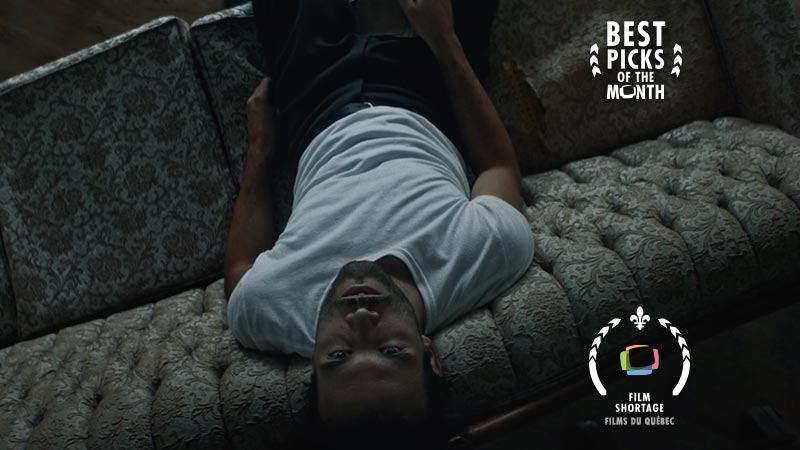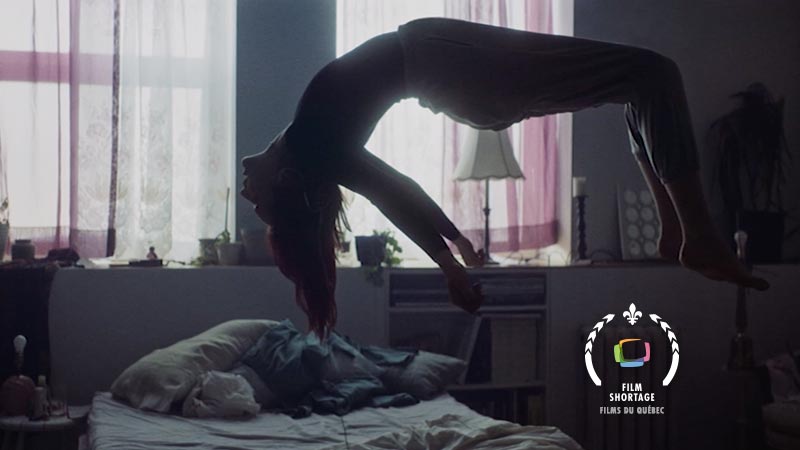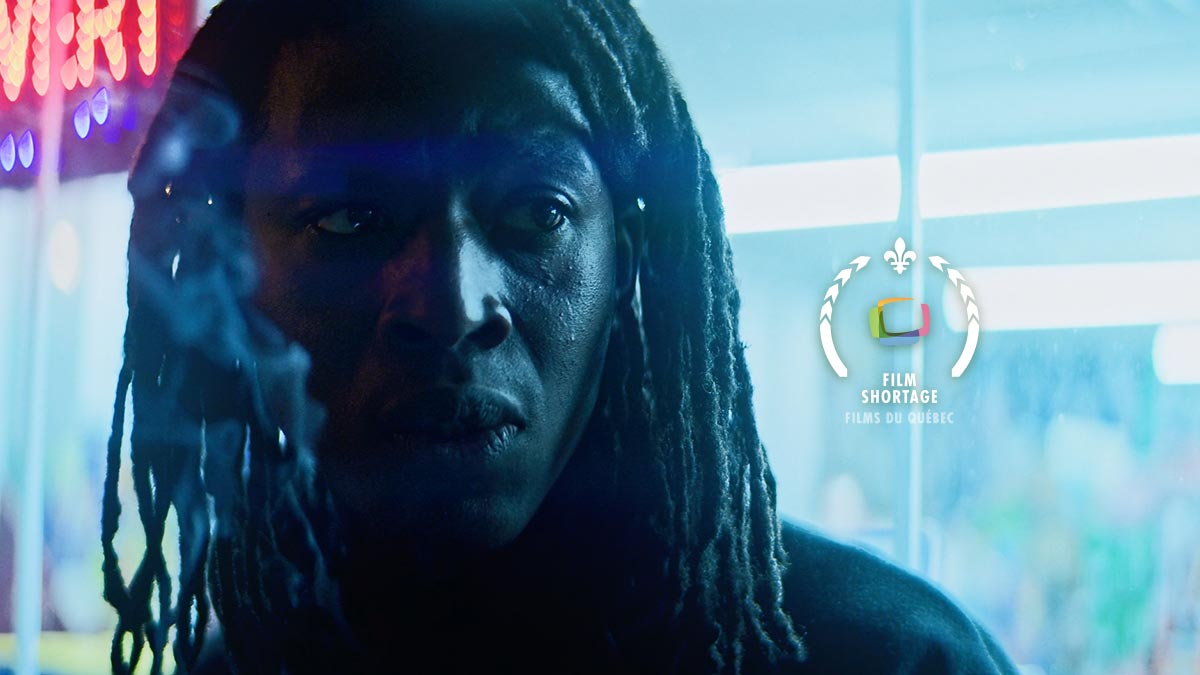Following surgery, a man embarks on a dreamlike journey that unveils his deepest fears and darkest apprehensions.
“NonNonNon – Mada Mada feat. Orlanda (Director’s Cut)” is a mesmerizing short film music video directed by Alexandre Richard that takes viewers on a surreal journey through the psyche of a man recovering from surgery. As he navigates through a dreamlike landscape, the protagonist confronts his deepest fears and darkest apprehensions, unfolding a narrative that blurs the lines between reality and imagination. Set to the captivating music written and performed by Mada Mada, the film creates an immersive experience that delves into themes of introspection, transformation, and self-discovery.
Directed with a keen eye for visual storytelling, Alexandre Richard captivates audiences with its stunning cinematography and evocative imagery. The dreamlike atmosphere of the film draws viewers into the protagonist’s inner world, inviting them to reflect on their own fears and vulnerabilities. With its seamless blend of music and visuals, “NonNonNon” offers a compelling exploration of the human psyche and the journey towards healing and self-acceptance.
The concept of a dreamlike journey unveiling deepest fears and apprehensions is quite intriguing. Can you elaborate on the inspiration behind this narrative choice?
“NonNonNon – Mada Mada,” got that ethereal thing going on right off the bat. When I’m deep into the process of envisioning a short film music video, that track’s on a loop. Picture this: one night, I’m at home, and the room’s filled with Mada Mada’s music. On the floor, my dog, blind as can be, but still lost in a dream. His paws, they’re moving through the air, like he’s chasing something only he can see. And that made me wonder: “what’s going on in the mind of a blind being during its dreams?”. That moment sparked this whole train of thought, and boom, the idea for a new scenario started taking shape.
How did you approach visually portraying the protagonist’s emotional journey through dreamlike sequences following surgery?
When I was working on the script, I wanted to hit those song moments that really drive the story forward, the beats that make you sit up and pay attention. And to do that, I had to sync up the visuals with how the music evolves. I already had the whole story mapped out in my head, so it was just about dropping those anchor points at the right spots and pushing the story where we wanted it to go. Take, for instance, the opening scene with the doctor – a plunge into reality. Likewise, as the tale concludes with his girlfriend, we snap back to the real world. These two moments are the only instances of reality within the narrative. This deliberate absence of music during these moments heightens the song’s dreamlike essence, since every dream or nightmare that our protagonist witnesses dances to the rhythm of Mada Mada’s music.
I made sure people could really feel the trippy vibe of these dreams by incorporating leitmotifs like the eye opening, waking up, and glasses falling. They serve as guides through our character’s wild ride across various dreams. When he grabs those glasses in the last dream, it’s a sign he’s beginning to realize he’s dreaming and wants to regain control. And those dreams turning into nightmares? That’s where things get really interesting. Each one delves deep into our protagonist’s fears, allowing me to explore cool art styles like expressionism and surrealism. Picture shattered mirrors reflecting the loss of self-image or betrayals by loved ones signifying the loss of love – all adding layers to his character’s story and depicting what he feels he’s losing with his blindness.
Could you share some insights into the visual style and creative decisions made during the production process?
My cinematographer, Graham GS, and I, we were meticulous in selecting those LOMO SUPER SPEED (GL OPTICS REHOUSING) lenses. They have this special quality when you open them wide – this softness that we needed, and they deliver that shallow depth of field perfectly. It’s all about deepening the narrative – that subtle blur and chromatic aberration really drive home the theme of losing sight.
For me, it’s about using the camera to transport the audience into the heart of our protagonist’s experience. Whether it’s the fluid camera movements that mirror their gestures and/or emotions or the lenses that give you the sensation of seeing through their eyes, it’s about immersing you in their world.
We went all out with practical effects for most of our nightmare scenes, ensuring every detail was just right. But for the eye disintegration scene at the climax, we had to turn to the CGI wizards. I wanted you to feel it – to experience the eyes tearing apart and fading into nothingness. And let me tell you, the team at AA STUDIOS absolutely nailed it. They brought our vision to life in a way that’s visually breathtaking.
Music plays a significant role in enhancing the overall experience of the video clip. How did you collaborate with the musicians to ensure the soundtrack seamlessly integrated with the narrative and visuals?
Now, this part was all about me adapting and conjuring up a story that truly captured the essence of the song. Naturally, it’s still a collaborative effort because we both give the green light to the decisions we make together. And let me tell you, this isn’t our first rodeo; we’ve had our sights set on creating a short film/music video from the get-go. It’s something we’ve done before with “Autonome,” and it’s exactly what we set out to do with this project too.
Me and Mada Mada were in tune from day one.
Can you discuss any specific challenges faced during the filming process, particularly in bringing the dreamlike sequences to life?
Securing the perfect location was no easy feat. We scoured far and wide, conducting extensive research until we stumbled upon the absolute gem of a house that perfectly embodied the aesthetic and dreamlike vibe we were aiming for. Once we found it, the real challenge began – the scheduling hurdles. You know, music videos don’t exactly come with the same hefty budgets as big fiction films, so when we set out to create this narrative-driven project, we were well aware we’d be racing against the clock.
But hey, that’s where my art direction team truly shone. In the blink of an eye, they transformed countless rooms to fit different scenes, from turning a standard room into a doctor’s office to crafting these truly unique settings. I gotta hand it to them – their exceptional work took this project to a whole new level.
This is your third collaboration with MADA MADA, how does this video differ from Autonome?
You know, this isn’t my first rodeo with MADA MADA. We’ve teamed up before on “Autonome” and on my short film “FACADE: ADRIFT IN A SEA OF STRANGERS” back in 2019-2020, so we were already in sync when it comes to our creative visions and what drives us narratively.
Now, comparing this project to “Autonome,” there are some pretty big differences. First off, “Autonome” had dance elements and featured an actor/dancer as the protagonist. But with “NonNonNon,” it’s a whole new ballgame – MADA MADA steps into the spotlight as our protagonist for the first time in one of his music videos. That’s a big shift. Plus, “Autonome” was all about being confined, you know? It was set in a tight space. But with “NonNonNon,” we’re exploring different scenes, dreams, and settings, giving us more room to experiment.
You know what’s cool? Despite these differences, both “Autonome” and “NonNonNon” have their own vibe, their own essence. They’re authentic because they came from the heart, inspired by the emotions stirred up by MADA MADA’s music playing on loop during my many days of brainstorming.
Were there any particular cinematic influences or references that inspired the direction of this film/music video?
Actually, this project sprang entirely from my own imagination—it’s deeply personal and fueled by a profound emotional connection and extensive brainstorming. While I have immense admiration for visionaries like Guillermo Del Toro, Denis Villeneuve, and Jennifer Kent—artists who skillfully weave metaphor, expressionism, and magical realism into their narratives—my core mission is to remain faithful to my own creative voice.Each time I embark on a new project, I aim to delve deeper into what it means to experience a film directed by Alexandre Richard.
Can you provide insights into any upcoming projects or collaborations you have in the pipeline after completing this director’s cut?
I’m currently developing a short film called ‘MONSTERA,’ funded by the Conseil des Arts et Lettres du Quebec (CALQ), with production set for 2024-2025. It’s a tightly crafted psychological family drama, infused with layers of horror, expressionism, and surrealism. This deeply personal project is expected to debut towards the end of 2025 or in early 2026.
Finally, can you tell us which are your favorite short films?
Here are some of my favorite short films :
Next Floor – Denis Villeneuve (Watch on FS)
How to Be Alone – Kate Trefry
Brotherhood – Meryam Joobeur (Watch on FS – Top 10 2020)
Fauve – Jérémy Comte (Watch on FS – Best Short 2019)
Brasier – Emilie Mannering




